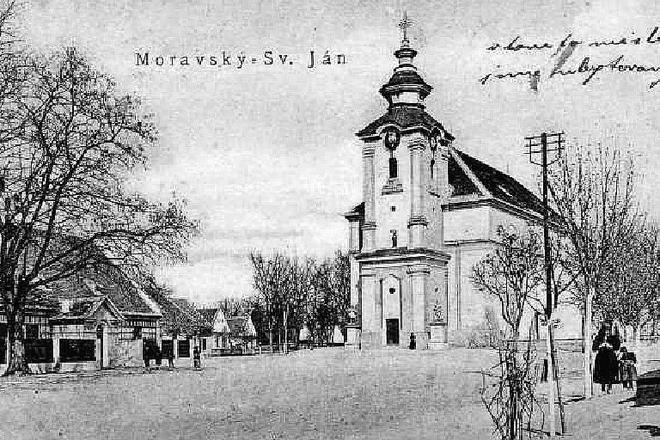THE BEGINNINGS of this small municipality reflect the interesting history of the Záhorie region in the Middle Ages. At the beginning of the Great Hungarian Empire, this was a barely inhabited and quite dangerous border region settled only by the half-wild nomadic tribes that guarded the frontier. The tribes, originally from the distant Russian steppe, were largely pagan and so efforts began to systematically Christianise them. In practice, this meant that a church was built near each settlement to gradually turn the pagans towards Christianity. These efforts were very successful.
And what did the individual sites look like? Near the area occupied by the Küküló tribe, the hamlet Borský Svätý Jur arose; near that of the Polovec tribe, Svätý Mikuláš – today known as Plavecký Svätý Mikuláš – began; and near the Sikuls’ checkpoint (the present day municipality of Sekule), the settlement of Svätý Ján sprang up – today it is known as Moravský Svätý Ján.
In this postcard dating back to shortly after the WWI, we see the dominant building of the town – the Church of St. John, or Svätý Ján.


